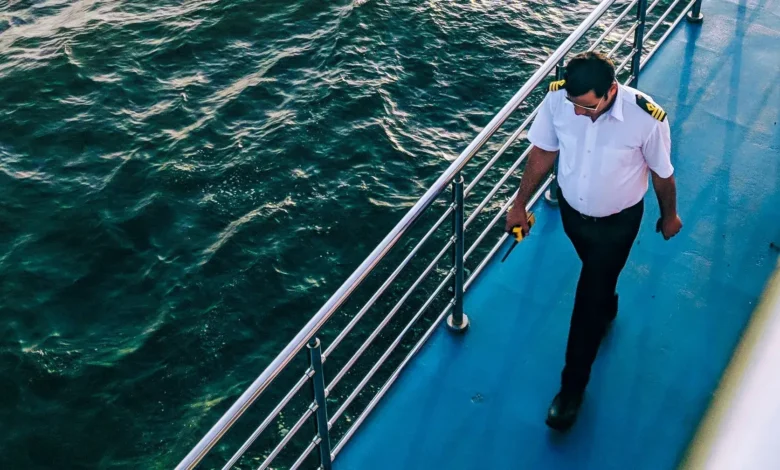What to Know About Language, Cash, and Courtesy While Cruising

Setting out on a cruise is a thrilling experience, offering a seamless blend of relaxation and discovery. Whether you’re island-hopping through the Caribbean, sailing past Norwegian fjords, or drifting along the coastlines of Asia, you’re bound to encounter a rich tapestry of cultures. As smooth as cruising can be, venturing off the ship into foreign ports requires some cultural navigation. Understanding local language basics, payment preferences, and etiquette norms can significantly enhance your experience—and prevent embarrassing missteps.
This is especially true in destinations like Japan, where culture and tradition are deeply rooted and subtly expressed. While many Japan cruises are known for their efficient port experiences and high hospitality standards, being prepared for the smaller interactions onshore can be just as crucial. Here’s what you need to know about language, currency, and courtesy, no matter where your itinerary takes you.
LANGUAGE: MASTERING THE BASICS
Even though English is widely used aboard cruise ships, it often isn’t the primary language spoken in ports of call. While you don’t need to be fluent, learning a few key phrases in the local language goes a long way. Simple greetings like “hello,” “thank you,” and “excuse me” can make a strong positive impression and are appreciated by locals in most countries.
Apps like Google Translate or offline phrasebooks can be handy, especially in places like Japan, where English signage is present but not universal. In some rural Japanese ports or towns away from the main cruise terminals, staff in shops or eateries may not speak English confidently. Practicing a few Japanese pleasantries such as “arigatou gozaimasu” (thank you very much) or “sumimasen” (excuse me/sorry) can make interactions much smoother.
When traveling through Europe, you’ll find English more commonly understood, especially in tourist-heavy cities. However, attempting even a small phrase in French, Italian, or Spanish—depending on the country—can open doors and hearts.
CASH: KNOW BEFORE YOU GO
Even in an increasingly digital world, cash still reigns in many cruise destinations. Before you leave the ship, it’s wise to carry a small amount of the local currency—enough for transportation, tips, snacks, or emergency purchases. Relying solely on credit cards can be risky, particularly in smaller towns or with street vendors and local markets.
Take Japan, for example. Though it’s a technological powerhouse, it’s also famously cash-oriented. ATMs that accept foreign cards can be harder to find than expected, and many small restaurants or shops may not accept plastic at all. On a Japan cruise, having yen in your pocket when stepping off the ship in ports like Kanazawa or Hakodate is a smart move.
In contrast, most European countries do take cards widely, but cash is still appreciated for gratuities or small purchases. In Scandinavian ports, for example, contactless payments are popular, but local market stalls or public restrooms might still expect coins or notes.
It’s best to exchange money before you leave or use a reputable ATM near the port. Be wary of high fees and unfavorable exchange rates at airport or port kiosks. And remember—try not to carry too much cash, and split it between your wallet and another secure spot on your person or in your day bag.
COURTESY: CUSTOMS AND CONDUCT ON SHORE
Cultural etiquette varies from port to port, and being mindful of local customs can enhance your interactions and prevent you from coming across as rude—even unintentionally. Here are a few key tips that apply across many cruise destinations:
1. Dress Modestly in Sacred or Cultural Sites
Whether you’re visiting a temple in Kyoto, a cathedral in Barcelona, or a mosque in Istanbul, dressing appropriately shows respect. Shoulders and knees should generally be covered, and hats removed. Carrying a lightweight scarf or shawl is a useful trick for quick cover-ups.
2. Be Aware of Tipping Norms
Tipping customs vary greatly. In Japan, tipping is generally not expected and may even be refused, as good service is considered standard. In contrast, European countries have a range of norms—from rounding up the bill in Germany to 10–15% in Italy or Spain. Knowing the general expectation in each port of call can save you confusion and avoid offense.
3. Respect Personal Space and Noise Levels
Onboard the ship, things can be lively and sociable, but local customs may call for a more reserved demeanor. In Japan, for instance, loud talking on public transportation is discouraged. The same goes for many Scandinavian countries where public decorum is highly valued.
4. Observe Dining Etiquette
Dining customs can differ even when the food seems familiar. Slurping noodles in Japan, for example, is perfectly acceptable and even seen as a compliment to the chef, while talking with your mouth full or resting your elbows on the table may raise eyebrows elsewhere.
5. Ask Before Taking Photos
Street photography is popular among travelers, but it’s always wise to ask permission before photographing people, especially in traditional settings or when children are involved. In some regions, taking pictures of certain buildings or cultural sites is restricted.
A LITTLE PREP GOES A LONG WAY
Cruising offers a unique opportunity to experience multiple cultures in a short span of time, often with minimal logistical stress. However, the more informed you are before you step ashore, the more meaningful your encounters can be. Reading up on your destinations or downloading a cultural etiquette guide can help.
If your cruise itinerary includes Japan, or similarly culturally rich countries, taking a bit of extra time to prepare is well worth the effort. You’ll find that locals are often delighted by a respectful approach, even if your language skills are imperfect.
Ultimately, being courteous, carrying a bit of local currency, and showing an effort to engage in the local language and customs reflect a traveler’s mindset that goes beyond sightseeing. It’s about experiencing the destination, not just observing it—and that’s where the true value of cruising shines.



